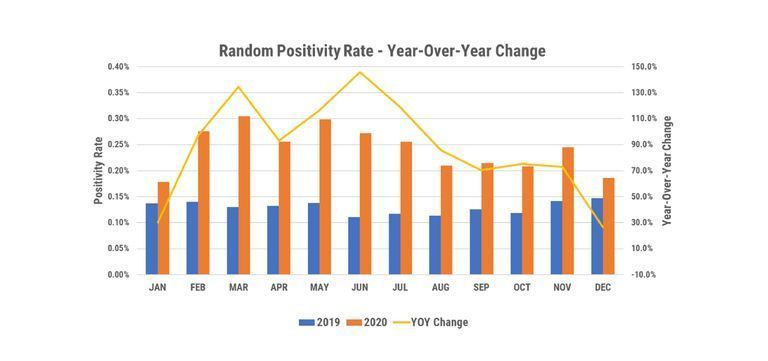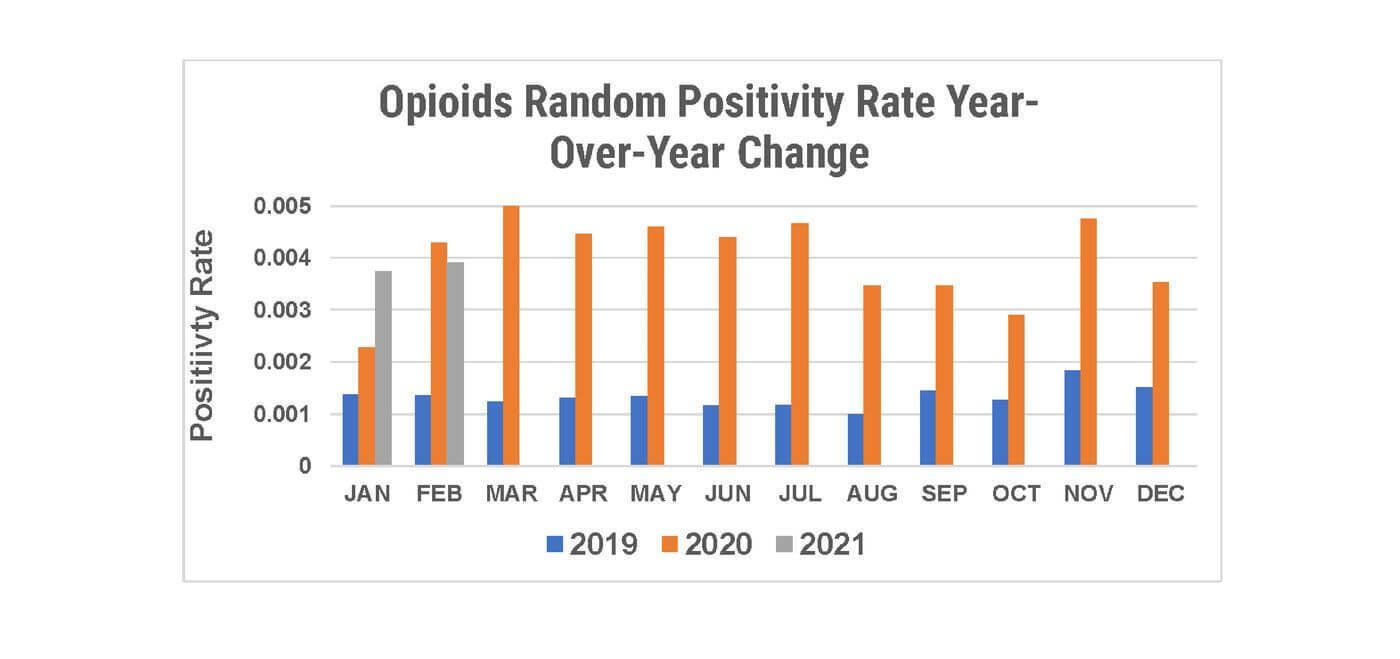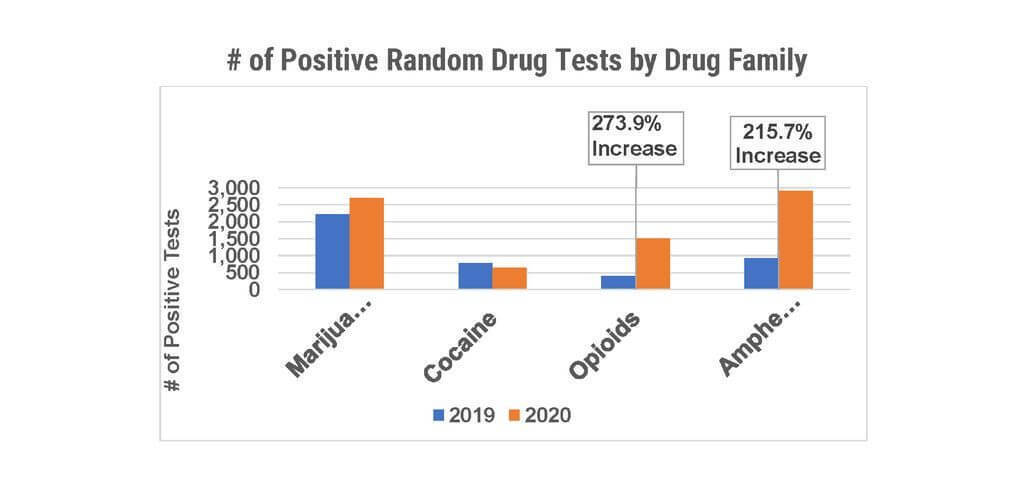The COVID-19 pandemic has challenged workplace safety goals. With widespread opioid addiction concerns and amphetamine use already on the rise prior to the pandemic, employers are now seeing substantially increased drug test positivity rates. The pandemic has exacerbated conditions that lead people to self-medicate to help cope with the emotions that come along with unemployment, financial and health issues, and lockdowns. In addition, some individuals refrained from seeking treatment centers out of fear of contracting the virus or faced closed/limited hours at the facilities altogether.
When reflecting on other historic catastrophes with widespread stress, such as Hurricane Katrina, 9/11, etc., studies showed that drug abuse increased and stayed significantly elevated for long periods following the incident. Currently, we’re seeing similar trends involving drug abuse during the initial months of COVID-19, and the higher positivity rates continue to linger.
When analyzing drug testing positivity rates from DISA Global Solutions, random drug testing positivity rates spiked as much as 145% year-over-year during the pandemic. Opioids and amphetamines also saw extreme increases of 600% and 400%, respectively. Overall, all random drug testing positivity rates are up 83% from 2019 to 2020.

The positivity rates have started to return towards historical averages towards the end of 2020, but they still remain higher than any time in 2019.
While opioids and amphetamines have seen their positivity rates decrease from record breaking peaks, they are STILL up 491% and 292% respectively from 18 months ago!

As a result of this pandemic, both amphetamines and opioids have surpassed cocaine in random drug testing positivity rates, which is the first time DISA has seen that occur. Cocaine usage continues to drop as users turn to amphetamines instead, but the decrease in cocaine positivity rates is just a mere fraction of new amphetamine and opioid positive tests. Additionally, marijuana was not the number one cause of failed random drug testing in 2020. Amphetamines are now seeing more positive tests than even marijuana as a result of the sudden and drastic acceleration during COVID-19.

Continued Safety
As vaccinations become more widely available to the general public and states reopen, it’s essential that employers implement drug testing procedures prior to rebuilding their staff or returning employees to the workplace. Not only is pre-employment testing important in choosing a reliable hire, but drug testing before employees return to work following a furlough or lay-off are also instrumental in maintaining a safe workplace. Across all industries, the average employee with an untreated substance abuse disorder costs their employer $7,000 per year in excess healthcare expenses, absenteeism, and turnover costs. In safety sensitive industries, this amount is closer to $35,000 due to the higher risk of injury or facility downtime.
To enable companies to resume testing, collection sites have enforced new guidelines and safety measures to reduce the risk of COVID-19 exposure. Some of those measures include waiting in the car, enhanced cleaning, mask/glove protocols, and enhanced social distancing.
How Can Employers Prepare?
It’s vital that employers remain aware of positivity rates and prepare their workplace now. As substance abuse is expected to continue increasing, employers can protect their workplace by enforcing a clear and concise written drug testing policy. Implementing a comprehensive drug testing program with the addition of hair testing will create a longer 90-day detection window. Urinalysis testing will detect recent drug usage and, when used in conjunction with hair testing, eliminate any gaps in drug use.
In addition, supervisors and other appropriate employees should be trained to help detect and implement proper reasonable suspicion drug testing practices. With amphetamine and opioid use on the rise and with the ever-changing marijuana laws state-by-state, employers should also consider including a medical disclosure policy as part of their standard drug testing program. A medical disclosure policy will help inform employers when an employee is taking a prescription that could impair them in the workplace. These policies should define clear consequences and outline safety-sensitive positions they apply to, such as a forklift driver, if the employee tests positive. Suppose an employee fails to notify the employer of their prescription. In that case, they can take action on a passed drug test even if the employee has a prescription because they violated company policy. It’s standard practice to readdress your company drug testing policy and procedures and make updates to include changes state laws, regulations, etc., but even more important to do so as industries prepare for employees returning to work during and following the pandemic.
Are you an employer and still have questions regarding employment screening?
DISA can help! Get answers directly from DISA’s subject matter experts with ‘Ask DISA’
Visit www.askdisa.com to ask your questions today.
About DISA Global Solutions
Founded in 1986, DISA is the industry-leading provider of employee screening and compliance services. Headquartered in Houston, with more than 35 offices throughout the U.S. and Canada, DISA’s comprehensive scope of services includes drug and alcohol testing, background check, occupational health, and transportation compliance. DISA assists employers in making informed staffing decisions while building a culture of safety in their workplace.
